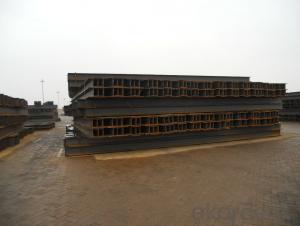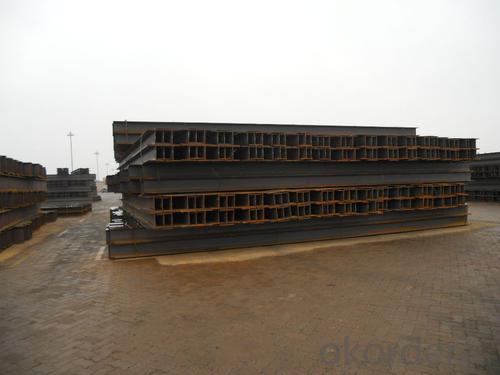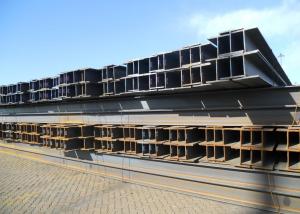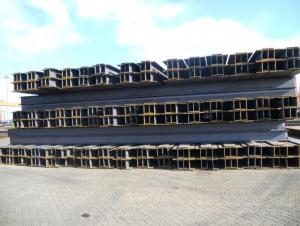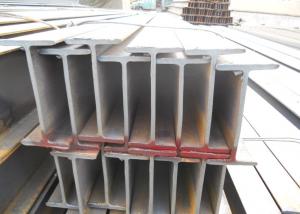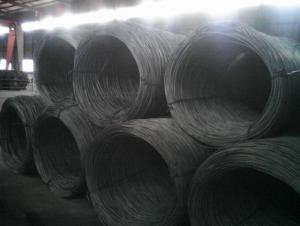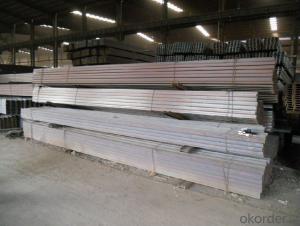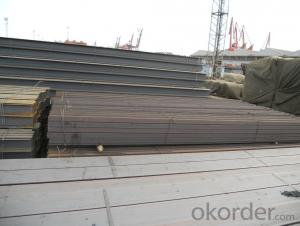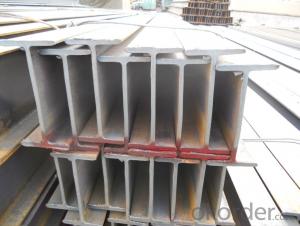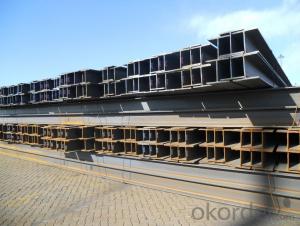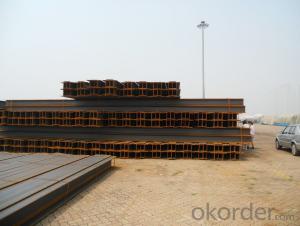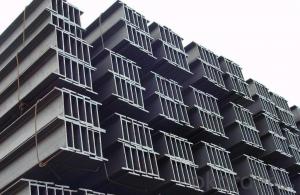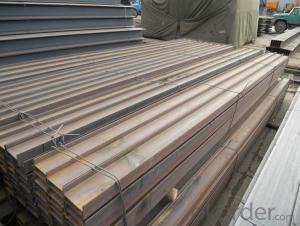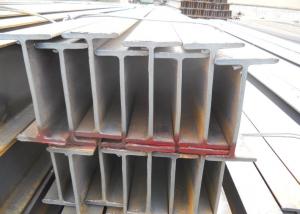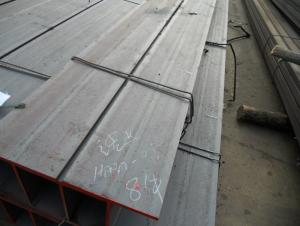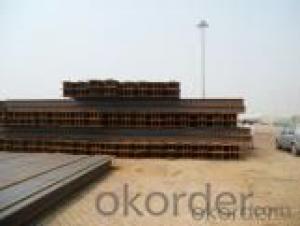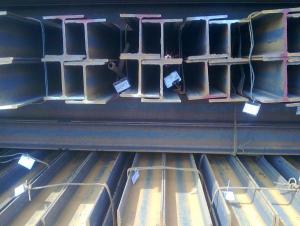Japanese Standard SS400 H beam with High Quality 300mm-350mm
- Loading Port:
- China main port
- Payment Terms:
- TT or LC
- Min Order Qty:
- 100 m.t
- Supply Capability:
- 15000 m.t/month
OKorder Service Pledge
OKorder Financial Service
You Might Also Like
Specifications of Japanese Standard SS400 H beam with High Quality 300mm-350mm:
1. Standard: JIS 3192
2. Grade: SS400 or Equivalent
3. Length: 10m, 12m as following table
4. Invoicing on theoretical weight or actual weight as customer request
5.Payment: TT or L/C
Size and Mass of Japanese Standard SS400 H beam with High Quality 300mm-350mm:
| Size (mm) | Mass (Kg/m) | Size (mm) | Mass (Kg) |
| 300*300*10.0 | 93.0 | 346*174*6.0 | 41.2 |
| 300*305*15.0 | 105 | 350*175*7.0 | 49.4 |
Packaging & Delivery of Japanese Standard SS400 H beam with High Quality 300mm-350mm for Building Structures:
1. Packing: it is nude packed in bundles by steel wire rod
2. Bundle weight: not more than 3.5MT for bulk vessel; less than 3 MT for container load
3. Marks:
Color marking: There will be color marking on both end of the bundle for the cargo delivered by bulk vessel. That makes it easily to distinguish at the destination port.
Tag mark: there will be tag mark tied up on the bundles. The information usually including supplier logo and name, product name, made in China, shipping marks and other information request by the customer.
If loading by container the marking is not needed, but we will prepare it as customer request.
4. Transportation: the goods are delivered by truck from mill to loading port, the maximum quantity can be loaded is around 40MTs by each truck. If the order quantity cannot reach the full truck loaded, the transportation cost per ton will be little higher than full load.
5. Delivered by container or bulk vessel
FAQ:
Q1: Why buy Materials & Equipment from OKorder.com?
A1: All products offered by OKorder.com are carefully selected from China's most reliable manufacturing enterprises. Through its ISO certifications, OKorder.com adheres to the highest standards and a commitment to supply chain safety and customer satisfaction.
Q2: How do we guarantee the quality of our products?
A2: We have established an advanced quality management system which conducts strict quality tests at every step, from raw materials to the final product. At the same time, we provide extensive follow-up service assurances as required.
Q3: How soon can we receive the product after purchase?
A3: Within three days of placing an order, we will arrange production. The shipping date is dependent upon the quatity, how many sizes you want and the plan of production, but is typically 1 month to 2 months days from the beginning of production.
Images of Japanese Standard SS400 H beam with High Quality 300mm-350mm:
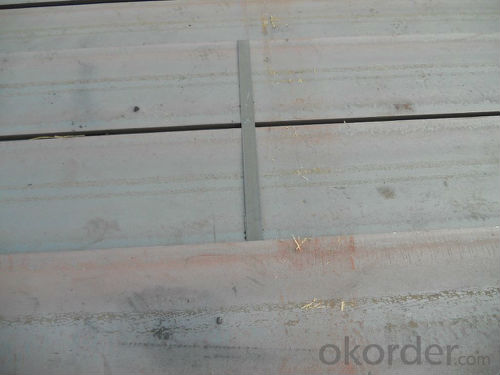
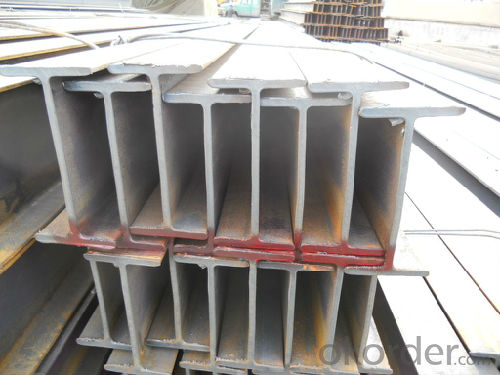
* If you would like to get our price, please inform us the size, standard/material and quantity. Thank you very much for your attention.
- Q: How do steel H-beams contribute to sustainable construction?
- Steel H-beams contribute to sustainable construction in several ways. Firstly, they are highly durable and have a long lifespan, reducing the need for frequent replacement or repair. Secondly, steel is a highly recyclable material, allowing H-beams to be reused or repurposed at the end of their life cycle. Additionally, steel H-beams can be manufactured using recycled steel, reducing the demand for virgin materials and minimizing the environmental impact of production. Lastly, their structural efficiency and load-bearing capacity enable the construction of lighter and more efficient buildings, reducing the overall material usage and energy consumption during construction. Overall, steel H-beams play a significant role in sustainable construction by promoting resource efficiency, durability, and recyclability.
- Q: How do steel H-beams perform in terms of fatigue resistance?
- Steel H-beams are known for their excellent fatigue resistance. This is primarily due to their structural design, which allows for an even distribution of stress across the entire beam. The shape of the H-beam provides a high moment of inertia, meaning it can withstand bending moments without experiencing significant deformation or failure. The flanges of the H-beam play a crucial role in enhancing its fatigue resistance. They are wider and thicker than the web, which helps to distribute the load more evenly and efficiently. This design feature minimizes stress concentrations and prevents the initiation and propagation of cracks, which are common causes of fatigue failure. Additionally, steel, as a material, exhibits inherent fatigue resistance properties. It has a high strength-to-weight ratio and excellent ductility, enabling it to withstand cyclic loading and vibrations over an extended period. Steel H-beams are often made from high-strength alloys, further enhancing their fatigue resistance capabilities. These factors, combined with the manufacturing processes involved in producing H-beams, such as hot rolling and heat treatment, ensure that steel H-beams have superior fatigue resistance. They are widely used in various structural applications, including bridges, buildings, and heavy machinery, where fatigue failure is a critical concern. However, it is important to note that fatigue resistance is influenced by several factors, including the magnitude and frequency of the applied loads, the presence of any environmental or corrosive conditions, and the quality of the fabrication and construction processes. Proper design, regular inspections, and maintenance are necessary to ensure the long-term fatigue performance of steel H-beams.
- Q: Can steel H-beams be used in automotive manufacturing?
- Yes, steel H-beams can be used in automotive manufacturing. They are commonly used in the construction of vehicle frames and chassis due to their high strength-to-weight ratio and structural stability.
- Q: How do steel H-beams perform in structures with large spans and cantilevers?
- Steel H-beams are highly effective in structures with large spans and cantilevers. Due to their inherent strength and stiffness, they provide excellent support and load-bearing capacity, making them suitable for withstanding heavy loads and long spans. The H-beam's shape allows for efficient distribution of forces, ensuring stability and minimizing deflection. Additionally, steel H-beams have a high resistance to bending, resulting in reliable performance and structural integrity even in challenging conditions.
- Q: How do steel H-beams perform in terms of shear resistance?
- Steel H-beams are renowned for their exceptional ability to withstand shear forces. The design of H-beams, featuring flanges and web, enables the even distribution of these forces throughout the entire beam. The wider flanges located at the top and bottom of the H-beam provide enhanced resistance against shear forces, while the web that connects the flanges facilitates the transfer of these forces between them. The shear resistance of H-beams is further enhanced by their geometry. The wide flanges and deep web of these beams result in a larger moment of inertia in comparison to other beam profiles. This increased moment of inertia effectively combats shearing forces that act parallel to the web. Moreover, the use of steel as a material greatly contributes to the high shear strength of H-beams. Steel H-beams are typically constructed from structural-grade steel, which possesses exceptional strength and stiffness properties. This ensures that the beams can withstand shear forces without experiencing significant deformation or failure. In summary, the outstanding shear resistance performance of steel H-beams is a result of their well-designed structure and the material properties of steel. These beams are extensively utilized in construction and structural engineering projects that require robust support systems capable of effectively withstanding shear forces.
- Q: Can steel H-beams be used in museum or exhibition hall construction?
- Yes, steel H-beams can be used in museum or exhibition hall construction. Steel H-beams are commonly used in large-scale constructions due to their structural strength and versatility. They provide the necessary support and stability for buildings with wide spans and heavy loads, making them suitable for museum or exhibition hall construction, where large open spaces are often required to display exhibits or artworks.
- Q: How do steel H-beams contribute to waste reduction in construction?
- There are several reasons why steel H-beams play a significant role in waste reduction in construction. Firstly, these beams are incredibly strong and durable, ensuring that the structures they support have a longer lifespan. This means that there is less need for frequent repairs or replacements, resulting in less waste generated from these activities. Furthermore, steel H-beams can be easily recycled when they reach the end of their life cycle. When a building is demolished or renovated, the steel beams can be collected and sent to recycling facilities. Unlike other construction materials, steel can be recycled over and over again without losing its quality. By recycling steel H-beams, we can reduce the amount of waste that would otherwise end up in landfills. In addition, steel H-beams are lightweight compared to other construction materials like concrete or wood. This makes transportation and installation much easier and requires fewer resources and less energy. As a result, the environmental impact associated with transportation emissions is reduced, and there is less waste generated during the construction process. Moreover, steel H-beams offer a flexible and adaptable design solution. They can be easily modified, reconfigured, or reused in different projects. This adaptability reduces the need for new materials and decreases construction waste. It also allows for more sustainable practices, such as deconstructing and repurposing existing structures instead of demolishing them completely. In conclusion, steel H-beams contribute to waste reduction in construction through their durability, recyclability, lightweight nature, and adaptability. By using these beams, we can prolong the lifespan of structures, recycle materials at the end of their life cycle, reduce transportation emissions, and promote a more sustainable construction industry.
- Q: What are the typical uses of steel H-beams in construction projects?
- Steel H-beams are commonly used in construction projects for a variety of purposes. One of the typical uses of steel H-beams is for structural support in buildings and bridges. These beams are designed to withstand heavy loads and provide stability to the structure. In building construction, steel H-beams are used as columns and beams to support the weight of the building and distribute the load evenly. They are commonly used in high-rise buildings, industrial structures, and warehouses. H-beams are also used in the construction of bridges, where they provide the necessary strength and stability to support the weight of the bridge and the traffic passing over it. Another typical use of steel H-beams is in the construction of mezzanine floors. Mezzanine floors are intermediate floors that are built within a building to create additional usable space. H-beams are used as the primary support structure for these floors, providing the necessary strength and stability. Steel H-beams are also commonly used in the construction of platforms, walkways, and staircases. They provide a sturdy and reliable structure for these elements, ensuring the safety of those using them. Overall, steel H-beams are essential components in construction projects, providing structural support, stability, and strength. Their versatility and durability make them a popular choice in various construction applications.
- Q: Can steel H-beams be used as columns or posts?
- Steel H-beams have multiple applications, one of which is serving as columns or posts. In construction projects, they are often used as load-bearing members to provide support for vertical loads. Their exceptional strength and durability make them suitable for structural purposes like columns or posts. The H shape of the beam enhances stability and load-bearing capacity, making it an excellent option for supporting heavy loads in buildings, bridges, and various other structures. Moreover, steel H-beams are easily fabricated and installed, making them widely favored in construction projects. However, it is crucial to consult with a structural engineer or a professional in the field to ensure that the chosen steel H-beam is appropriate for the intended use and meets all necessary safety requirements.
- Q: How do steel H-beams compare to concrete beams in terms of cost and durability?
- Steel H-beams generally offer a more cost-effective option compared to concrete beams due to their lower material costs and quicker installation. Additionally, steel beams are highly durable and can withstand heavy loads and extreme conditions better than concrete beams.
Send your message to us
Japanese Standard SS400 H beam with High Quality 300mm-350mm
- Loading Port:
- China main port
- Payment Terms:
- TT or LC
- Min Order Qty:
- 100 m.t
- Supply Capability:
- 15000 m.t/month
OKorder Service Pledge
OKorder Financial Service
Similar products
Hot products
Hot Searches
Related keywords
